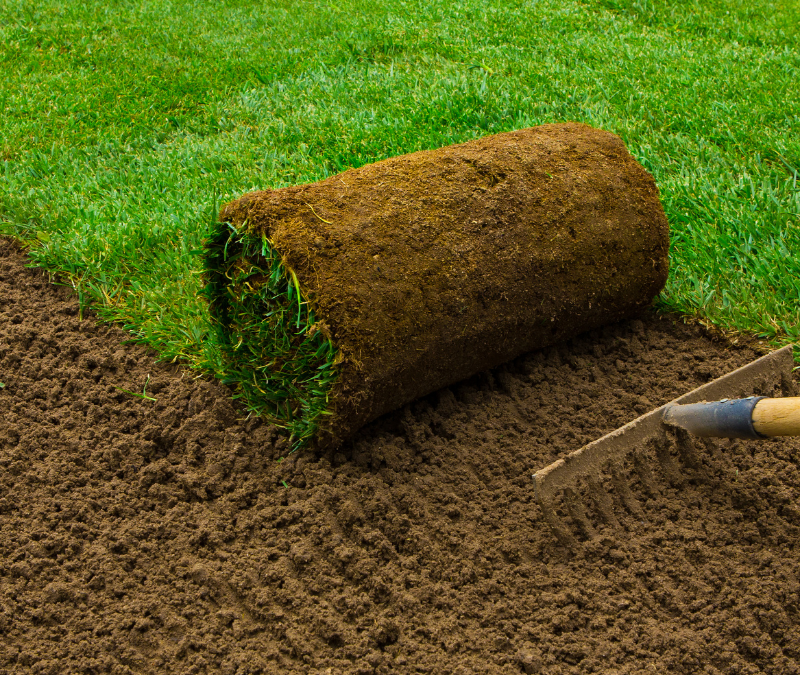Why the Season Matters
Temperature and Growth Conditions
Temperature plays a critical role in how well sod establishes itself. Cool-season grasses, such as fescue and Kentucky bluegrass, thrive in moderate temperatures, making fall the preferred season for installation. Conversely, warm-season grasses like Bermuda and Zoysia require higher temperatures, often making late spring the ideal time for laying sod.
In addition to temperature, soil warmth is another key factor. Warm soil encourages root growth, allowing newly installed sod to anchor itself quickly. If the soil is too cold, roots struggle to develop, delaying establishment and increasing the risk of sod failure. Spring and fall offer ideal soil temperatures, ensuring that sod integrates well into the existing soil.
Impact of Seasonal Weather Patterns
Seasonal weather conditions greatly influence sod health. Spring provides ample rainfall, reducing the need for frequent watering, but it also comes with unpredictable temperature swings that can stress young turf. Fall, on the other hand, offers stable temperatures and less risk of extreme heat, promoting strong root development before winter dormancy.
Wind, humidity, and frost are additional weather factors to consider. Spring sod installation may face drying winds and unexpected cold snaps, while fall sod might encounter early frosts if installed too late in the season. Choosing the right time within each season ensures sod gets the best start for long-term success.
Benefits of Laying Sod in Spring
Optimal Growth and Root Establishment
Spring’s rising temperatures and increased daylight promote active growth in warm-season grasses like Bermuda and Zoysia. This period allows sod to establish robust roots before summer’s heat, especially when coupled with spring rainfall that maintains soil moisture. The combination of mild temperatures and naturally occurring rainfall creates the perfect environment for root penetration, ensuring the sod integrates well with the soil.
Additionally, the active growth phase of many grass varieties in spring helps the sod recover from any stress caused during transportation and installation. With proper watering and maintenance, sod laid in spring can develop a strong root system before summer, making it more resilient to heat and foot traffic.
Availability of Resources and Labor
Spring is a prime season for landscaping services, meaning sod farms and garden centers are well-stocked with fresh, high-quality sod. Homeowners have a greater selection of grass varieties to choose from, ensuring they can find the best match for their lawn’s needs.
Moreover, professional landscapers and lawn care services are readily available in spring. This makes it easier to schedule installation and access expert guidance on soil preparation, watering schedules, and fertilization. By installing sod in spring, homeowners can take full advantage of seasonal resources and professional expertise to ensure a successful, long-lasting lawn.
Advantages of Laying Sod in Fall
Reduced Weed Competition
One of the biggest advantages of laying sod in the fall is the reduced competition from weeds. During the cooler months, many common lawn weeds, such as crabgrass and dandelions, begin to die off or become dormant. With fewer weeds competing for nutrients, water, and sunlight, newly laid sod has a better chance to establish itself without interference. This allows the roots to penetrate the soil more effectively and promotes a healthier, more uniform lawn.
Additionally, since weed germination is lower in fall, homeowners may require fewer herbicide treatments, reducing chemical use and promoting a more environmentally friendly approach to lawn care.
Conducive Weather for Root Growth
The combination of warm soil and cool air in fall creates ideal conditions for root development. Unlike in spring, when temperature fluctuations can stress young sod, fall offers more consistent temperatures, allowing sod to establish deep, strong roots before winter dormancy.
Another benefit of fall installation is that the sod requires less frequent watering compared to summer or even spring. The cooler weather helps retain soil moisture, preventing rapid evaporation and reducing overall water consumption. This makes fall sod installation both cost-effective and environmentally responsible.
Comparing Costs: Spring vs. Fall
Material and Labor Costs
The cost of sod and installation can vary depending on the season. In spring, demand for landscaping services tends to be higher, which may lead to increased labor costs due to peak-season pricing. Sod farms also experience high demand, which can sometimes result in limited availability of certain grass varieties, potentially driving up costs.
In contrast, fall is considered an off-peak season for many landscaping companies, which means homeowners may find more competitive pricing on sod and installation services. Additionally, sod farms may offer discounts on surplus inventory before winter, making fall a budget-friendly option for homeowners looking to establish a new lawn.
Long-term Maintenance Expenses
While spring sod installation provides a longer growing season before winter, it often requires more intensive care during the hotter summer months. Increased watering, fertilization, and pest management can add to the overall cost of maintaining a spring-installed lawn.
Fall sod installation, on the other hand, typically requires less maintenance since cooler temperatures reduce water evaporation, and weeds are less aggressive. With a well-established root system before winter, fall-laid sod is often heartier and requires less intervention in the following growing season, potentially lowering long-term maintenance costs.
Expert Tips for Laying Sod in Any Season
Soil Preparation and Sod Selection
Proper soil preparation is vital. Removing existing vegetation, tilling, and leveling the soil ensures good contact between sod and soil. Adding a layer of nutrient-rich topsoil or compost can further improve soil structure, ensuring the sod receives the nutrients needed for strong root development.
Selecting the right sod variety is also crucial. Warm-season grasses like Bermuda, Zoysia, and St. Augustine thrive in hotter regions, making them ideal for spring or summer installation. Cool-season grasses such as Kentucky bluegrass and fescue perform best in cooler climates and are better suited for fall installation. Consulting with a local sod supplier or landscaping professional can help determine the best grass type for a specific location.
Watering and Maintenance Best Practices
Immediate and consistent watering after installation is crucial for root development. During the first few weeks, frequent, shallow watering is necessary to keep the soil consistently moist. Once the sod begins to root, watering can be reduced to deeper, less frequent sessions to encourage strong root growth..
Conclusion
Both spring and fall offer ideal conditions for sod installation, each with unique benefits. Spring provides rapid growth and resource availability, while fall offers reduced weed competition and optimal rooting conditions. Regardless of the season, proper soil preparation, sod selection, and maintenance practices are essential for long-term lawn success.
By understanding the advantages of each season and following expert sod installation tips, homeowners can establish a vibrant, resilient lawn that enhances their outdoor space. For the best results, working with a professional landscaping service ensures a smooth installation process and a lawn that thrives for years to come.
Related Articles
Lawn Launch Guide: Mowing, Feeding & FAQs for Freshly Laid Sod
Laying new sod is like hitting the reset button on your lawn — but what happens next is just as...
How to Measure and Prep Your Yard for Sod Installation
Thinking about transforming your lawn with new sod? Smart move. But before the first roll hits the...
The Hidden Dangers of Laying Sod Over Existing Grass
Sod installation offers homeowners an immediate solution to achieving a lush, green lawn. By...
The Ultimate Guide to Watering Sod: Optimal Amounts and Schedule for a Lush Lawn
Sod is pre-grown grass that is cultivated and harvested with a layer of soil held together by...

